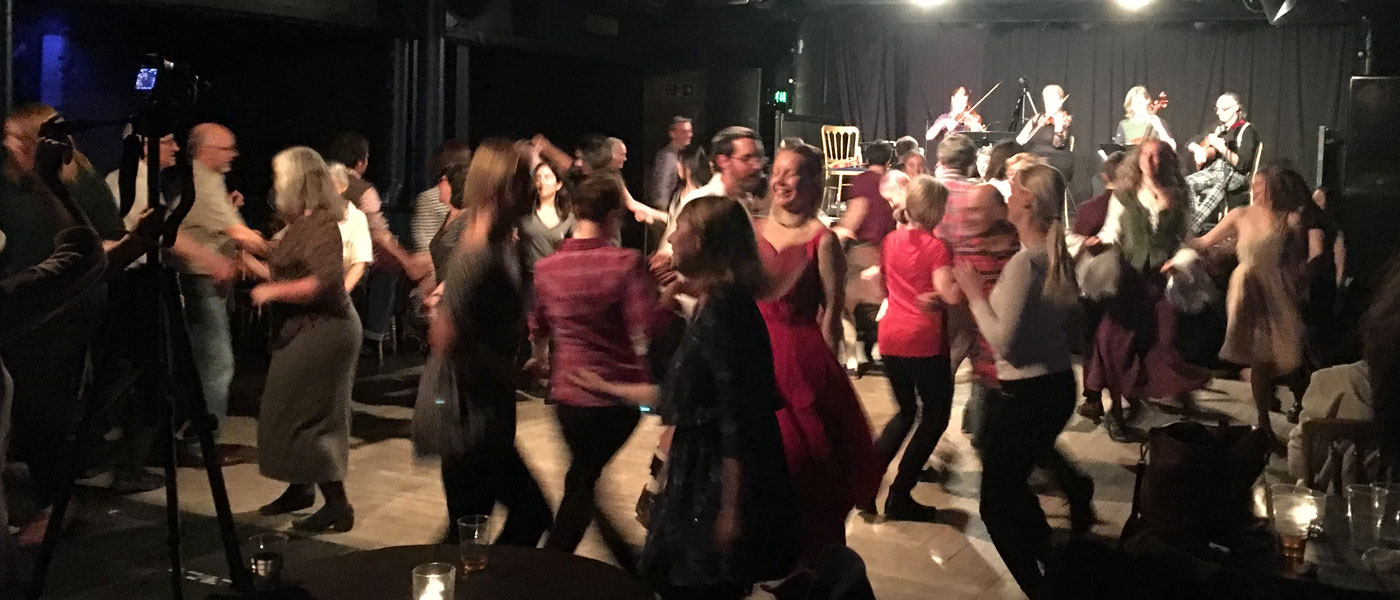Bass Culture in Scottish Musical Traditions

Bass Culture in Scottish Musical Traditions was a three year AHRC funded project in collaboration between the University of Glasgow, the University of Cambridge and the Royal Conservatoire of Scotland. The research undertaken was to examine a vast number of sources of Scottish fiddle music printed before 1850. Due to the vast number of resources, a database was created, which is now hosted on the open access site www.hms.scot. However, a unique aim of the project was to utilise public engagement activities as a way of forming and developing a new musical tradition. There were several outreach events for musicians but the main activity was to bring together a dance band in order to perform the music and this led to many new developments as the project progressed. Though a dance band had been a main aim, the idea of actual 18th century dancing alongside the band was not considered until much later in the project and yet this has been one of the most important aspects in engaging the public in the Bass Culture project. This has also fed into further research questions that interrogate the origins of ceilidh dancing, which is generally accepted part of Scottish culture.
David McGuinness explained: ‘One of the important ways we developed this project was through public engagement. Though we had several tangible products, such as an album; live performances; papers etc., that sense of output is only the beginning of the story. We worked with a small network of musicians, who gathered, learned and played from the sources and are now disseminating what they learned to other people such as other professional, amateur and student players. This allows the information to move out into the world much more organically, and it was deliberately built into all the process from the beginning’.
The Bass Culture project worked with a number of external partners, including Perth and Kinross Leisure services who had a large resource of Scottish fiddle music and were keen for their collections to be made available online. The researchers also worked with concert promoters including Café Oto in London and Cottiers Chamber Project in Glasgow. These promotors were instrumental in getting an audience, though the band had to adapt to two very different receptions as one audience expected a traditional classical music style concert, while the other were used to a much more avant garde approach to performance.
The freelance musicians had a variety of ideas, and approaches but were committed to making a cohesive band. This project exemplified the importance of building good, strong relationships, where the main players work together to achieve a common goal thus overcoming bureaucratic difficulties that occur as a result of working with historical sources. This is one of the main pieces of advice that McGuinness can give to those who wish to embark on a similar project. He noted that researchers should ‘always be aware of your network or communities who are involved and share your work with others. There all kinds of opportunities for projects to grow and develop in different ways so long as you are conscience of those who are doing similar work or even work that at first does not appear related but could be in the future’.
Though the Bass Culture project is now complete, there are many plans for it to grow and develop. The musical elements have already begun to take on a life of their own as the team prepare to launch a regular historical dance band evening in Glasgow, but there are also plans to expand the infrastructure on the current website so that it can become and wider resource for historical Scottish music.
Related links
- Dr David McGuinness, Senior Lecturer in Music
- World changing research: Culture & Creative Economies

